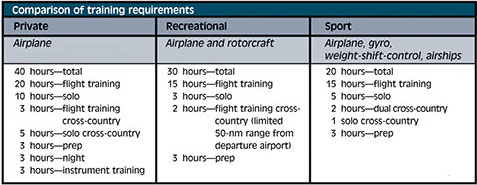Frequently Asked Questions

The average age of a student pilot is 34 years old. Many don't start until retirement and we have trained student pilots as old as 76 years young!
Subpart D - Third-Class Airman Medical Certificate § 67.303 Eye.
Eye standards for a thirdclass airman medical certificate are: (a) Distant visual acuity of 20/40 or better in each eye separately, with or without corrective lenses. If corrective lenses (spectacles or contact lenses) are necessary for 20/40 vision, the person may be eligible only on the condition that corrective lenses are worn while exercising the privileges of an airman certificate. (b) Near vision of 20/40 or better, Snellen equivalent, at 16 inches in each eye separately, with or without corrective lenses. (c) Ability to perceive those colors necessary for the safe performance of airman duties. (d) No acute or chronic pathological condition of either eye or adnexa that interferes with the proper function of an eye, that may reasonably be expected to progress to that degree, or that may reasonably be expected to be aggravated by flying.
For many people, simply achieving an appropriate weight, exercising regularly, and watching dietary salt will control their mild hypertension. Other individuals may be required to take medications to reduce their blood pressure. Either way, hypertension and its treatment should have little effect on one’s ability to be medically certified to fly.
If an individual with no known history of hypertension is found during the FAA exam to have blood pressure readings consistently higher than 155/95 then further investigation is required. Initially, this should consist of recording the blood pressure twice a day (morning and evening) for three consecutive days. If at least 4 of these 6 readings are 155/95 or less and the applicant is otherwise qualified, then no further action is required and the certificate can be issued. If the three-day blood pressure checks confirm the presence of hypertension, then treatment of some kind will generally be required for certification. Once a person is on a stable treatment plan and their blood pressure is adequately controlled without significant adverse effects, certification can be considered.


